Why should you be aware of the most common horse bit types? A horse bit is an essential tool for equestrian riders. It can be used to encourage a horse to go faster, stop, or turn. The severity of the bit you use depends on your goals and preference in riding style.
If you are looking for a basic type of training without any severe bits, find out more about English bits. If you want to become a competitive rider who needs more control over the horse’s mouth, check the common types of Western bits. This article will briefly explain the different types of these bits and how they are best suited for certain horses.
The Common Types of Horse Bits
English and Western horse bits are often confused with one another. This is a misconception, as the two types of these bit variations have entirely different purposes for riding styles.
Trail riders have used the English horse bit for centuries. It delivers gentler corrections than the Western horse bit does. If you want your horses to be more responsive when riding them competitively or need better balance control over their mouths during jumping competitions, use a Western bit instead. Both bit types come in many shapes, like a broken mouthpiece or gag cheek designs which alter severity levels. Both offer horse bits for all disciplines, so you can pick the one fitted to your needs.
Types of Western Horse Bits
1. Snaffle Bit
A snaffle bit usually consists of a mouthpiece, a cheekpiece on either side of the horse’s head, and a shank. The word “snaffle” is derived from its use. An abbreviation for “snaphaunce” or “snap bit” is the horseshoe-shaped metal part with small prongs that goes into the horse’s mouth to hold it steady. The snaffle bit applies pressure to the area between the front and back teeth.

Snaffle bits are typically used for pleasure riding. And to teach young riders how to control their steeds without using force. Western riders usually prefer this type of bit because they want gentle pressure from both horse reins when communicating directions through rein aids. However, at times you may need more severity if you’re trying to get your horse out of some bad habits. Or when dealing with high levels of resistance while training your horse.
2. Curb Bit
A curb bit is a metal bar with two curved prongs, one on each end. Curb bits are used for horse training purposes. Such horse bits create more severity than snaffles. These types of bits are also referred to as “curb chains” in the UK and Australia or even “choker sets.” They’re harsher than plain snaffles, so use them sparingly.

The curb bit is effective when you want your horse to stop moving forward and obey commands without question, such as during show jumping competitions. You may find curb bits helpful if your horse habitually loses focus while being ridden. Or the animal gets spooked easily by loud noises or sudden movements. The curb bit creates more pressure on the mouth’s bars and under the horse’s chin.
Types of English Horse Bits
1. D-Ring Snaffle Bit
The D-ring snaffle is an English horse bit in the shape of a “D” with two rings. There are four variations of this type: plain, with port or side bits, loose ring, and eggbutt.
This particular bit is gentler than other types of horse bits. It doesn’t have any chain-like features on the shanks as they create more severity when your animal pulls back against pressure applied by reins while riding.

2. Eggbutt Snaffle Bit
The Eggbutt Snaffle is an English bit similar to the D-ring snaffle but with a close-fitting mouthpiece.
This type of horse bit works best for horses who tend to lean on one side or the other. Or if they pull back when being ridden and are sensitive in their mouths. The eggbutt prevents your horse from leaning.
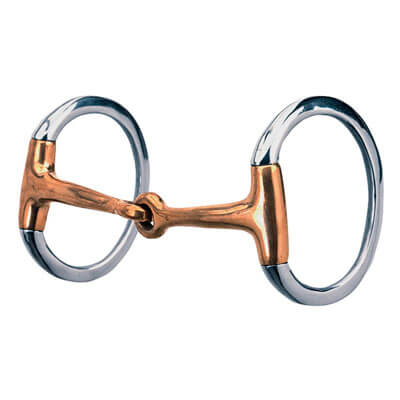
Because it has less pressure than other types of bits, it also doesn’t allow them to pull back as easily which can help prevent pulling habits like head tossing and biting at the mouthpiece.
Eggbutts come in either plain form or ported/side versions. You can choose between a loose ring or full cheekpieces depending on your preference: control or a loose feel.
3. Loose Ring Bit
The Loose Ring Snaffle Bit can be adjusted for varying degrees of tightness depending on what you need as a rider from your mount at any time. The horse can be ridden with a loose rein or pulled on without causing too much discomfort when the reins are tightened.
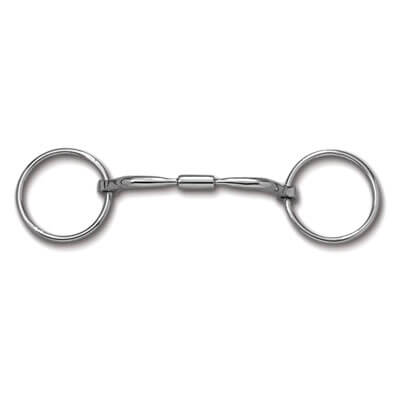
The bit will still act as an anchor for your horse’s mouth. And they can’t toss their head around uncontrollably in reaction to direct pressure from the rider. The horse has more control over how much force is applied. This means you’ll be less likely to cause harm by using excessive pull on the reins, which could lead to injury to both horse and rider.
That said, the loose bit does provide some grip. So if desired, there is a limited amount of pain infliction available at all times. You just need to know what level of severity you’re working within.
There are even more horse bit types. Some of them are designed for very sensitive mouths. Use a Chifney bit in case of a sensitive mouth.
Horse Bit Severity Chart
The severity of the horse bit is determined by how much pressure on the horse’s mouth you’re applying as well as which types of reins are used. Loose-rein bits (also called snaffle or direct) have a lower severity level because they don’t create pain. This makes them great for riding in general, schooling new horses, or practicing maneuvers like jumping from side to side.
Painful effects can be created with a little force on the reins if desired. Just stay within your chosen level of severity! Reins that pull upwards instead act as more severe bits. They cause discomfort when pulled back against the mouth and tighten around the jaw’s sensitive nerves. These types are often preferred for training purposes but may not work best for every rider and their horses.
Here’s a Horse Bit Severity Chart that might help you to choose the best bit for your equine.
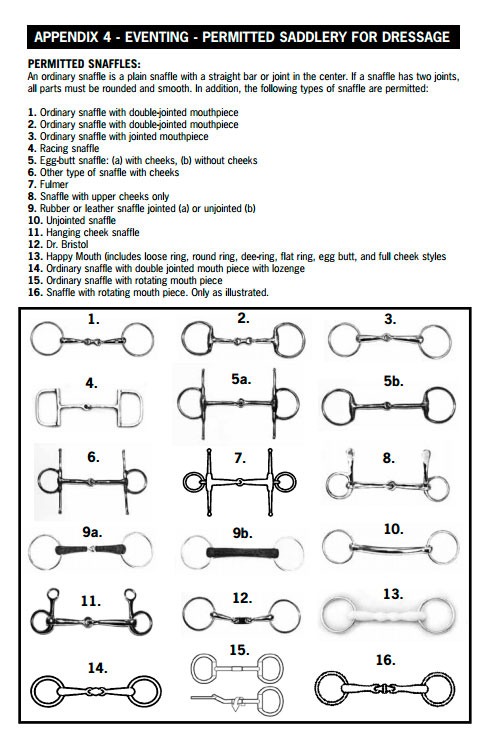
Horse Bit Size Chart
The size of the horse bit varies based on a number of factors. Most are sized by mouth circumference in inches, measured around the lips or bars from inside to outside, with nothing but slack in between. When using this method, you’ll want to round up or down for more precise measurements according to your needs and preferences.
For instance, if an equine has a 20″ mouth circumference, it’s better to round that measurement up to 21″. This will ensure they get the right fit without any problems.
Sizes can also be determined by age too:
- For foals (<12 months old), go one-half size larger than their current head/mouth circumference (e.g., at 12 mos., use a size 20″ bit).
- For young horses (12-18 months old), go one size larger than their current head/mouth circumference (e.g., at 18 mos., use a size 22″).
- For older horses (> 18 months old), measure the mouth and use a snaffle or curb for mild control and full cheek for more severe control.
This chart will help you find the appropriate piece of equipment to buy:
- Bit Size Chart: 16″, 17″, 18″, 19″.
- Snaffle Bit Sizes: 15 ½”, 16 ¼“, 17 ⅜”, 18 ½ ′.
- Curb Bit Sizes: 14″ – 17 ½ ” (depending on severity).
- Full Cheek Bit Sizes: 14 ½”, 15 ¼ “, 16 ⅛″.
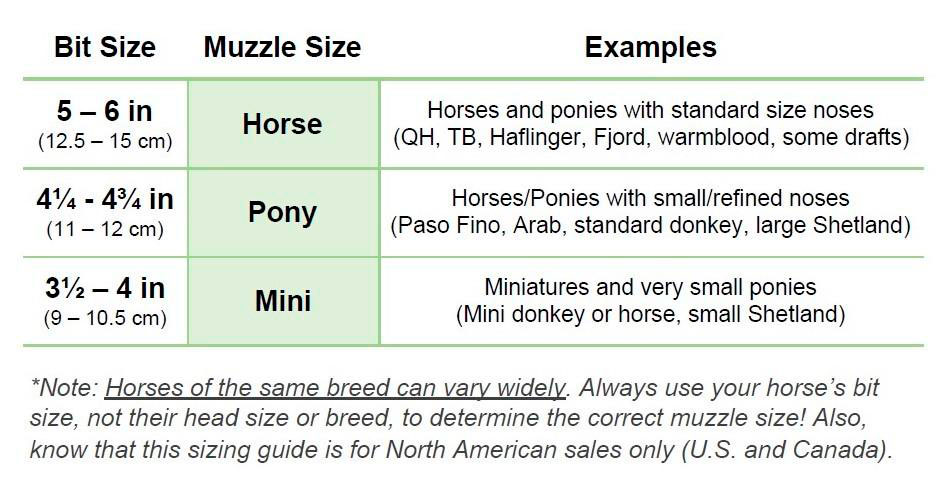
Frequently Asked Questions
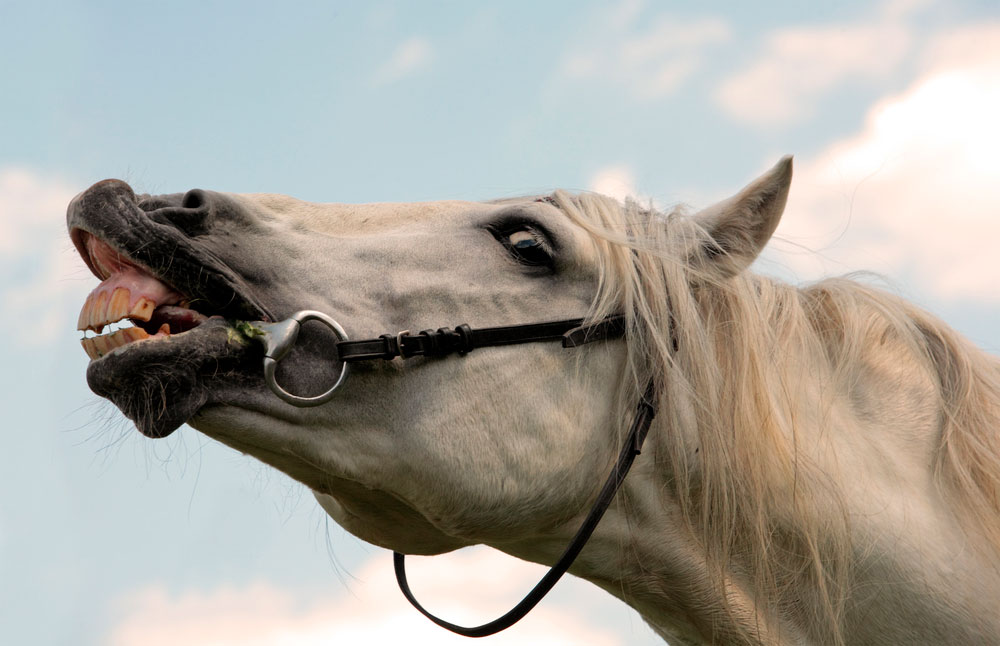
How to Choose a Bit for Your Horse?
Here are the tips to consider when choosing a horse bit:
- Choose a bit size that matches the horse’s head and mouth circumference.
- Use mild control for older horses with more severe control for younger ones.
- Avoid using bits as punishment: it can lead to behavioral problems such as aggression or rearing up.
For example, if your horse is 18 months old, you should use a snaffle or curb of moderate severity. It depends on whether the horse needs gentle handling (snaffle) or greater stopping power (curb). If your horse has an average mouth of 16”, look at choosing between sizes 17″ and 19″. You want your horse to be comfortable in its tack. Choose something around 18 ½”.
Check the detailed guide on how to measure a horse bit.
How to Put a Bit in a Horse Mouth?
Here’s how to introduce your horse to a horse bit.
- Place the bit in your hand and shake it side to side.
- Holding a piece of carrot, place your hand over her mouth and let him nibble on it with his teeth.
- Now move the treat away from their face as they sniff after it. At the same time, you offer them more bites of carrots.
- Reward the horse for any head movement that puts pressure on the bit by giving an extra bite or two of food when needed (this is called luring).
You can also try rubbing some sugar cubes along the top edge of their lips until he becomes interested enough to open his mouth. Take a few gentle nips at them. Then drop one into each corner of their jawline inside their cheek pouch so they can quickly close their mouth.
If your horse is still too nervous, you can try rubbing them along the top edge of his lips and then taking a few gentle nips at him so he becomes used to the pressure. You could also place some sugar cubes in each corner of his jawline inside his cheek pouch until he has to close it again quickly (this will ensure they cannot spit out the cube).
Increase the pressure in the horse bit area gradually. Keep going until your horse gives it in.
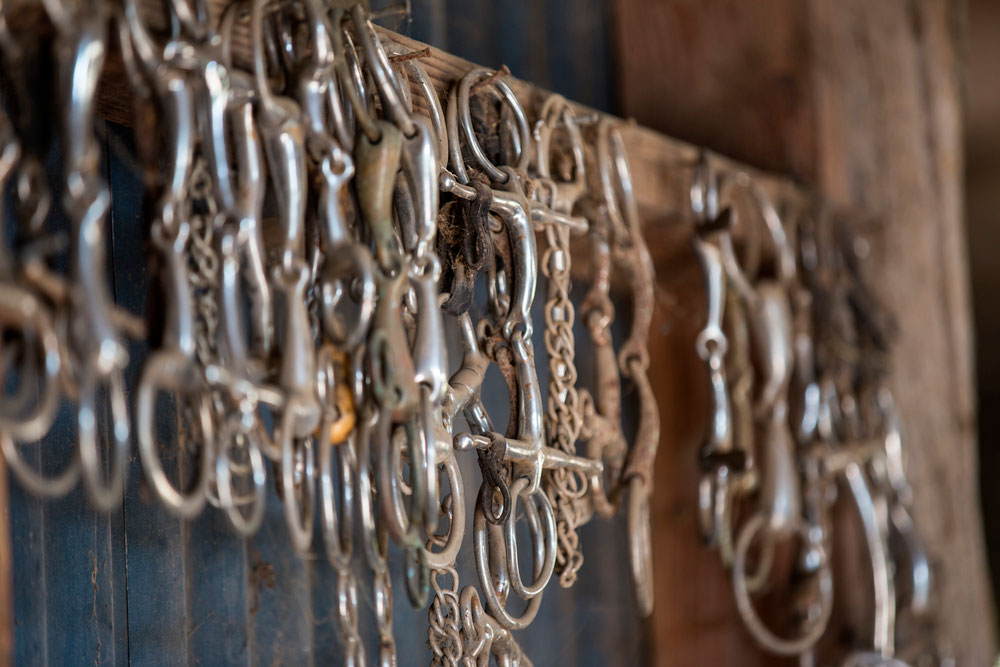
How to Clean a Horse Bit?
To clean a horse bit, soak it in a bucket of water with mild soap. Rub the edges of the bit to help clean off dried dirt and grime. Then rinse well with clear water. You can add a few drops of white vinegar to the water to help cut through any grease.
Dip your bit into a pot of boiling soapy water to remove stubborn stains. And bring it back up slowly with the edges facing down to better clean them off. Rinse well when finished.
Horse Bit Types Revealed
A horse bit is a type of mouthpiece made from metal or plastic. It helps to apply pressure and more leverage on the horse’s mouth. It’s done to control the direction and/or speed of horses. The severity level for a bit can range from mild to severe. It depends on which size you are using. Bits that provide harsh pressure are not recommended for inexperienced riders. This post outlines common Western and English types of bits and their severity levels. So you can choose the right horse bit that fits your needs best.
Image Source: horses-and-horse-information.com, wikipedia.org, fourstarbrand.com, gg-equine.com, shutterstock.com.
